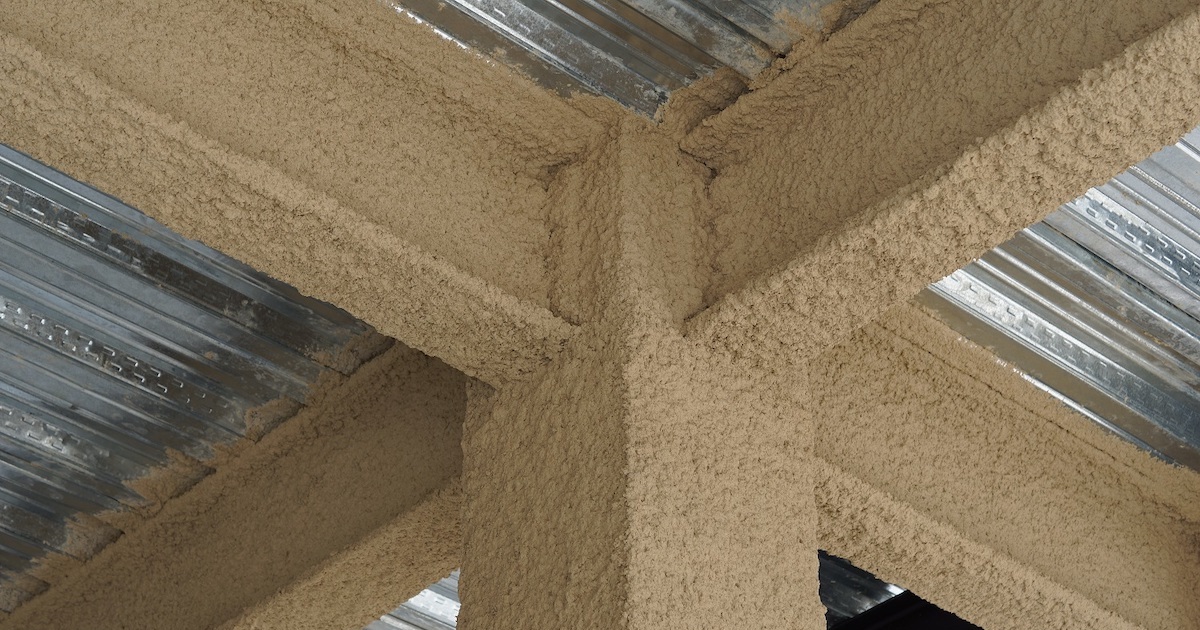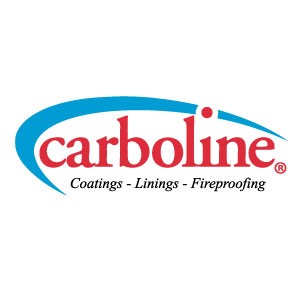
Despite the complexity of passive fire protection in the coatings market, the topic is commonly dropped into the laps of budding architects, engineers and applicators who are new to the vast world of fireproofing and may have minimal experience in the area.
In this three-part article series, we will break down the basic components of passive fire protection for commercial and industrial structures—from what it is and why it’s important, to the various fireproofing standards, materials and other important considerations.
What is passive fire protection?
A passive fire protection (PFP) coating system is a protective barrier that can be applied to a structure in order to either prevent or delay the transfer of thermal energy to the structural steel in the event of a fire.
This is achieved through a process of heat absorption and/or thermal insulation, which reduces the rate of heat increase to the structural component. Ultimately, allows the impact of the fire to be mitigated for a set duration.
Unlike active fire protection methods such as sprinkler systems or fire extinguishers, the PFP coating system does not require manual or automatic intervention in order to function. Additionally, it requires little to no maintenance over the life of its installation.
Why is fireproofing important?
When a steel structure is exposed to fire, it will rapidly rise in temperature. The fundamental purpose behind fireproofing materials is to slow down the heating of that structural steel.
This is particularly important because, as the temperature of steel rises, it loses strength and stiffness. If it gets hot enough, a structure could collapse under its own weight. At roughly 1,100°F (593°C), carbon steel has lost 50% of its initial strength. If installed correctly, passive fire protection can delay this rise in heat enough to allow for the safe evacuation of building occupants and reduce irreparable damage or even collapse before a fire can be extinguished.
A building that is not equipped with the proper fireproofing could be a complete loss after a fire, whereas one protected with the right fireproofing system may only need repairs.
Common types of fireproofing standards
There are many different types of fires—all of which vary in fuel source, temperature rise, and intensity. Because of this, several standards have been developed over the last century in an effort to mimic these conditions. The most common overarching categories of fires are cellulosic and hydrocarbon, which are named after the primary fuel type of each fire.
Cellulosic fire test standards like UL 263, ASTM E119, ISO 834, or BS 476 feature a slower temperature rise in order to simulate a fire that utilizes furniture, carpet, and/or paper as its primary fuel. These test standards are used to govern commercial or residential spaces. While each standard differs in temperature, test set-up, and failure criteria, they all model the continuous temperature rise of a cellulosic fire over multiple hours.
Hydrocarbon fire test standards like UL 1709 or NFPA 290 mimic a more intense, rapidly heating fire with hydrocarbons as the primary fuel source. These test standards attempt to simulate fire exposures in refineries, chemical processing facilities, or offshore oil platforms. For example, the UL 1709 fire curve reaches 2,000°F (1,103°C) within the first five minutes after ignition, which mimics the rapid spread of fire in a flammable hydrocarbon pool.
How long does fireproofing last?
Passive fire protection does not provide an indefinite level of protection against these types of heat exposures. Typically, fireproofing ranges in duration from 30 minutes to four hours.
The specific duration of time that a fireproofing system should last will be based on individual building codes, company specifications and/or industry standards. Whatever duration is chosen can influence the material selection and the thickness of the PFP to be installed.
As a general rule of thumb, the longer the duration, the more fireproofing material will be required. That said, there are a variety of other factors that can also influence this.
How much fireproofing is needed?
When it comes to the fireproofing of a structure, it's also important to understand that not all steel heats equally. A thinner piece of steel with more surface area and less mass will heat faster than a thick piece with a minimal surface area-to-mass ratio.
In order to estimate how quickly a steel structure will heat in the event of a fire, several common metrics may be used to measure the steel shape's relative "size," such as W/D, Hp/A, and A/P. These metrics attempt to express the size of a piece of steel as a single number.
W/D and A/P are calculated by dividing the weight per foot in lb/ft (W) or cross-sectional area (A) by the heated perimeter of the cross-section (D or P). A larger W/D or A/P will indicate a thicker, heavier piece of steel. Hp/A is a heated perimeter divided by a cross-sectional area. A smaller Hp/A corresponds to a thicker, heavier piece of steel.
As the steel gets thinner, the required level of passive fire protection typically increases in order to keep the duration of protection the same. The thickness required will also vary based on the orientation of the member. Columns, floor or roof beams, and decks or joists could require different thicknesses depending on the design or certification selected.
Issued after testing the fireproofing material in a furnace in order to verify its performance, these designs can call out specific factors like concrete thickness and density, deck make and model, steel size and shape, and fire protection material.
Now that we know what passive fire protection is and how it works on a basic level, the next concept that will be important to understand is that various types of fireproofing materials function in different ways to achieve the same goal—thermal insulation.
In parts two and three of this article series, we will be discussing key differences between the two most common types of fireproofing used for steel protection: spray-applied fire resistive materials (SFRMs) and intumescent fire resistive materials (IFRMs).

